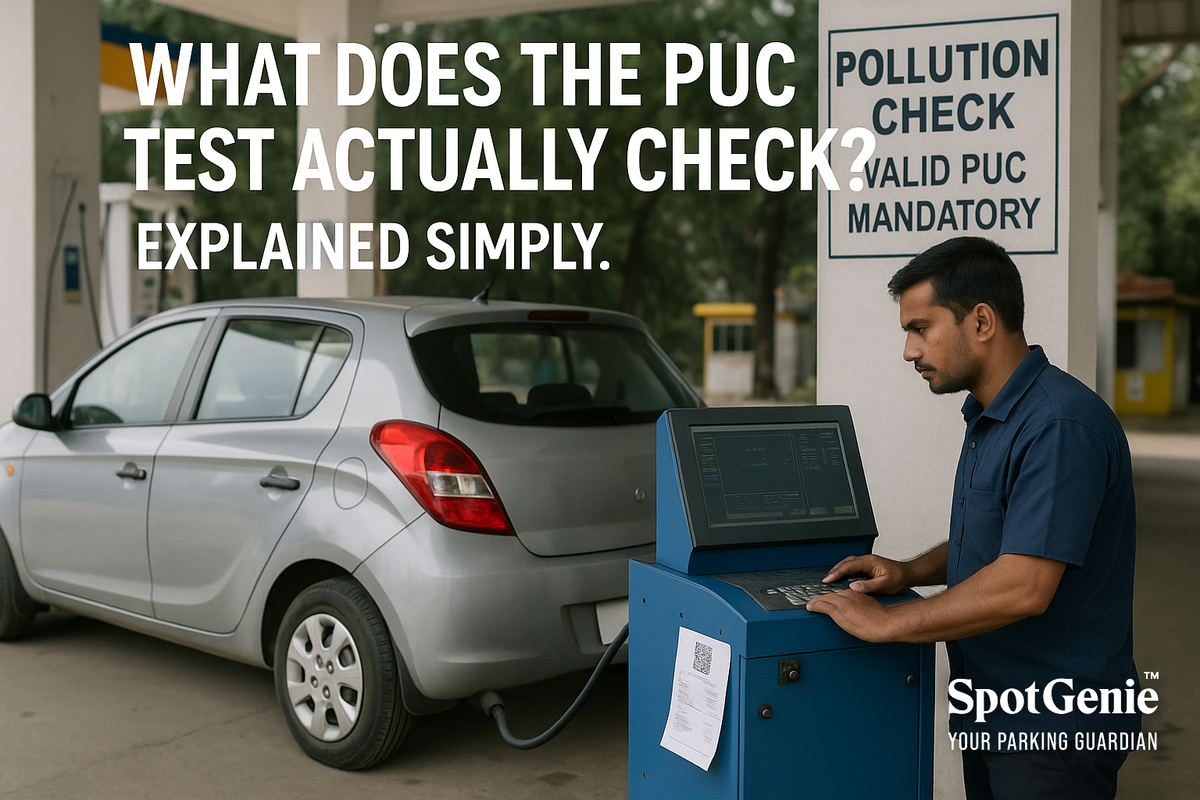PUC Test Explained: What It Does, How It Works & Why It Matters | SpotGenie Gyaan
Understand India’s PUC emission test, what pollutants it measures, how it’s conducted, and why valid pollution certificates are crucial for air health and law compliance.

PUC Test Explained: What It Does, How It Works & Why It Matters
SpotGenie Gyaan breaks down the Pollution Under Control (PUC) test into simple terms—what gets measured, how it's tested, and why the certificate is now tougher than ever to ignore.
What Does a PUC Test Actually Measure?
A PUC (Pollution Under Control) test checks how much harmful gas your vehicle is emitting. Depending on your fuel type:
- Petrol or CNG vehicles: How much carbon monoxide (CO) and hydrocarbons (HC) are coming out of your tailpipe when the engine is idling.
- Diesel vehicles: Smoke density, measured via industry standard Hartridge Smoke Units (HSU) or light absorption coefficient.
How Is the Test Conducted? Step-by-Step
- For petrol or CNG: The vehicle is started and left in neutral with ignition on. One reading is taken using a gas analyzer connected to the exhaust outlet. That’s your final reading.
- For diesel vehicles: The accelerator is pressed fully 4-5 times while connected to the analyzer. Multiple readings are averaged for the final result.
During the test, a small camera captures your number plate to ensure authenticity. The results are recorded in a computer system linked to the national VAHAN database.
What Are the Limits? What Ticks or Fails?
PUC standards depend on the vehicle’s age and emission norms (BS stages):
| Vehicle & Stage | CO Limit | HC (ppm) | Diesel Smoke |
|---|---|---|---|
| BS‑VI Petrol Car | 0.3 % | ≈ 200 ppm | — |
| BS‑IV Petrol | 0.5 % | ≈ 750 ppm | — |
| Two‑Wheeler Post‑2000 | CO ≤ 1 % | HC ≈ 500 ppm | — |
| Diesel BS‑IV | — | — | HSU ≤ 50 or absorption ≤ 1.6 |
Higher CO/HC or smoke density means fail—no certificate.
How Long Does It Last and What Happens if You Fail?
- New vehicle: First certificate is valid for one year; afterwards, renewal happens every 6 months.
- Failing the test: You’ll receive a rejection slip. Your vehicle needs servicing—check spark plugs, air filter, exhaust system—and then you must retake the test within 7 days.
What Your PUC Certificate Tells You
The printed certificate typically shows:
- Certificate serial number
- Vehicle registration number
- Test date & expiry date
- Emission readings
- A QR code linking to VAHAN’s digital certificate record
Why It Matters—More Than Just a Green/Yellow paper
Every PUC check helps across multiple fronts:
- Cleaner air and fewer respiratory diseases. Lower CO and HC improve city air and reduce risks of asthma and heart issues.
- Insurance and legal compliance—no valid PUC now blocks insurance renewal and risks a ₹10,000 fine per offence.
Conclusion
The PUC test may feel like a simple check, but it plays a critical part in reducing air pollution, protecting public health, and ensuring legal compliance. With tougher penalties and tech-powered enforcement, carrying a valid, digital, and genuine PUC isn’t just smart, it’s mandatory.
Follow us on:
🅾 Instagram |
ⓕ Facebook |
𝕏 X |
▶️ YouTube |
🟢 WhatsApp



